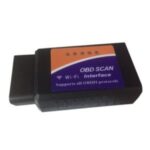OBD2 readiness monitors are crucial for ensuring your vehicle’s emission control systems are functioning correctly. Understanding these monitors and how to get them “ready” can save you time and money, especially when facing an emissions inspection. This guide provides a detailed explanation of OBD2 readiness monitors, their types, and how to ensure they’re complete.
Understanding OBD2 Readiness Monitors
Readiness monitors are self-diagnostic routines built into your car’s computer system. They continuously assess the performance of various emission-related components. These tests provide valuable insights into your vehicle’s overall health and emissions compliance. A “ready” status indicates that the corresponding system has been thoroughly tested and is functioning as expected.
Types of OBD2 Readiness Monitors
There are two primary categories of readiness monitors:
Continuous Monitors
These monitors operate constantly while the engine is running, providing real-time feedback on critical systems like:
- Misfire: Detects engine misfires that can increase emissions.
- Fuel System: Monitors the fuel delivery and mixture for optimal combustion.
- Comprehensive Component: Oversees the functionality of various emission-related components.
Non-Continuous Monitors
These monitors require specific driving conditions to initiate and complete their tests. Requirements can include specific speed, temperature, and engine load parameters. Non-continuous monitors differ between gasoline and diesel vehicles:
Gasoline Vehicles:
- Catalyst (CAT): Evaluates the catalytic converter’s efficiency in reducing harmful emissions.
- Heated Catalyst: Checks the functionality of the heated catalyst, crucial for cold-start emissions.
- Evaporative (EVAP) System: Monitors the fuel system for leaks in the vapor recovery system.
- Secondary Air System: Assesses the system responsible for injecting air into the exhaust during cold starts.
- Oxygen (O2) Sensor: Measures the oxygen content in the exhaust to adjust the fuel-air mixture.
- Oxygen Sensor Heater: Checks the heater that ensures quick operation of the oxygen sensor.
- EGR (Exhaust Gas Recirculation) and/or VVT System: Monitors systems designed to reduce nitrogen oxide emissions.
Diesel Vehicles:
- NMHC Catalyst: Evaluates the catalyst’s effectiveness in reducing non-methane hydrocarbon emissions.
- NOx/SCR Aftertreatment: Monitors the system responsible for reducing nitrogen oxide emissions.
- Boost Pressure: Checks the turbocharger or supercharger boost pressure.
- Exhaust Gas Sensor: Measures various gases in the exhaust to optimize combustion and emissions.
- PM Filter: Monitors the diesel particulate filter’s performance in trapping soot.
- EGR and/or VVT System: Monitors systems designed to reduce nitrogen oxide emissions.
OBD2 Monitor Status: Complete, Incomplete, and Disabled
Each monitor has a status indicating its completion:
- Complete: Indicates a successful test completion. Represented by a green checkmark in most OBD2 scanners.
- Incomplete: Signifies the test hasn’t been completed or has failed. Often shown as a red exclamation mark.
- Disabled: The test is temporarily deactivated due to specific conditions like extreme temperatures.
Why are OBD2 Monitors Incomplete?
Several factors can lead to an “incomplete” status:
- Recently Cleared Codes: Clearing diagnostic trouble codes (DTCs) resets monitor statuses.
- Power Loss: Disconnecting the battery can also reset the monitors.
- Insufficient Driving: Non-continuous monitors require specific driving conditions that may not be met during short trips.
How to Get OBD2 Ready: Completing the Drive Cycle
The most effective way to get your OBD2 monitors ready is by performing a drive cycle. This involves a specific sequence of driving maneuvers designed to activate and complete the various monitor tests.
General Guidelines:
- Ensure no active or pending DTCs.
- Maintain a fuel level between 35% and 85%.
- Perform a drive cycle – consult your owner’s manual for a vehicle-specific cycle.
Generic Drive Cycle (Use as a last resort if a vehicle-specific cycle is unavailable):
- Cold Start: Start with a cold engine (below 50°C/122°F).
- Idle: Idle for 2.5 minutes with A/C and rear defroster on (if equipped).
- Acceleration: Accelerate to 90 km/h (55 mph) at a moderate pace and hold for 3 minutes.
- Deceleration: Decelerate to 30 km/h (20 mph) without braking.
- Acceleration: Accelerate to 90-100 km/h (55-60 mph) at ¾ throttle and hold for 5 minutes.
- Stop: Come to a complete stop without braking.
Preparing for an Emissions Inspection
Checking your OBD2 readiness monitors before an inspection is essential. Most jurisdictions require a certain number of monitors to be “ready” for a passing grade. Ensure all necessary monitors are complete to avoid failing the inspection. Addressing any “incomplete” monitors promptly can save you from potential fines and costly repairs.
